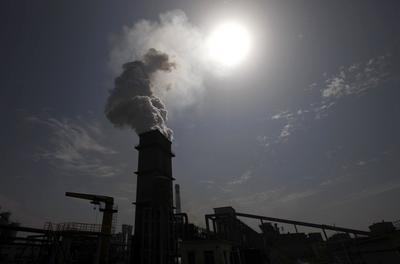If the world is to effectively curb the rise in global temperature at 2° Celsius or less (the international goal to avert calamitous damage), cleaning the production and use of Chinese coal will have to be an indispensable part of the solution.
Facing both international pressure to slow its spiking carbon emissions and domestic demand to improve deteriorating local environments, Beijing understands the importance of limiting its national coal consumption. The government aims to cap national coal production and consumption at around 3.9 billion tonnes by 2015.
The problem is that this type of command-and-control policy does not bode well for an increasingly market-oriented Chinese economy. In 2005 Beijing set a coal-production control target of 2.6 billion tonnes for 2010 — but China’s actual coal output reached 3.24 billion tonnes in order to meet national coal demand at 3.35 billion tonnes in the same year.
And in 2011, China consumed 3.68 billion tonnes of coal, almost half of the global total. To meet this record high demand, China not only produced 3.52 billion tonnes of coal, but also imported 182 million tonnes, passing Japan as the world’s largest coal importer in 2011. Considering that China’s coal production grew by 177 million tonnes annually between 2006 and 2010, it is safe to assume that China cannot simultaneously suppress national coal production and consumption to 3.9 billion tonnes by 2015.
But China needs to act. To lower mining-related environmental degradation, and to avoid an overly sizeable coal industry once national coal consumption peaks, Beijing needs to be serious about meeting its national coal-production cap. And coal imports should be utilised to suppress domestic coal-mining activities in the years to come.
Transportation, especially railways, has long been the weakest link of the Chinese coal value chain. While China’s highly monopolised railway sector will eventually need to be deregulated to improve efficiency, it still makes sense for Beijing to keep restricting the construction of dedicated coal rail lines to ensure the price of coal doesn’t drop too low. By doing so, retail coal prices in coastal provinces can be sustained to attract coal imports and encourage energy conservation and fuel substitution. In addition, the incentives for developing long-distance transmission of power will be higher and this will help alleviate deteriorating local environments.
Currently, about half of Chinese coal is burnt for power generation — and this ratio is expected to rise over time. This means that decarbonising electricity in China is critical to a global climate solution.
Pricing carbon is recognised as one of the most effective ways of driving down carbon emissions. But China’s carbon-trade pilot programs, launched in five cities and two provinces, are likely to stumble from the beginning, as the country’s collection of energy statistics — especially on coal — is widely regarded as not transparent or accurate enough. Sooner or later, Beijing may be forced to reconsider the possibility of levying a straightforward carbon tax.
But even if the above policy package is implemented, emissions reductions are not expected to be sufficient to support a global climate solution. So it is important for China to collaborate with the rest of the world, especially the United States, Russia and the European Union, on low-carbon initiatives. These could include technological innovation, environmental legislation, energy conservation and tackling the climate implications of China’s rising coal imports.
Coal is the backbone of China’s energy sector, but it has also contributed to an unprecedented global climate challenge. To clean the production and use of Chinese coal, Beijing should take an integrated approach that addresses all aspects of the issue — including mining activities, transport and end use. In addition, innovative policy instruments should be adopted to ensure China’s national coal consumption soon peaks. And this should all be supported by international collaboration.
The world urgently needs a solution to climate change. And reducing the emissions from coal in China is an essential element of any solution.
Kevin Jianjun Tu is a Senior Associate at the Carnegie Endowment for International Peace.

